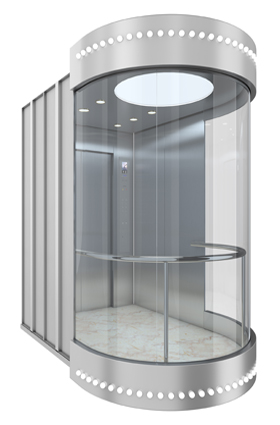Why Is a Passenger Elevator Essential for Modern Buildings?
2024-11-22
In today's fast-paced world, convenience and efficiency are key when designing any modern structure. Whether it’s a residential building, office complex, or commercial space, passenger elevators have become an essential part of the architectural landscape. But why exactly are they so crucial for modern buildings? Let’s explore the importance of passenger elevators and how they enhance our daily lives.
What Is a Passenger Elevator?
A passenger elevator is a type of vertical transportation system designed to carry people between different floors of a building. Unlike freight elevators, which are meant to carry goods, passenger elevators are specifically designed for comfort, speed, and safety of individuals.
Why Are Passenger Elevators So Important?
1. Accessibility for All
Passenger elevators are a critical accessibility feature, especially for people with disabilities, the elderly, or those carrying heavy loads. Elevators provide easy access to all levels of a building, eliminating the barriers posed by stairs and offering greater independence to individuals who might otherwise struggle to navigate the building.
2. Increased Efficiency and Convenience
In multi-story buildings, especially those with many floors, climbing stairs can be time-consuming and exhausting. Elevators enable quick and convenient movement between floors, saving time and improving the overall efficiency of the building. Whether you’re rushing to a meeting or bringing in groceries, having an elevator is a game-changer.
3. Maximizes Space
In modern building designs, space is often limited. By installing a passenger elevator, you make the most of your available space by providing a safe and efficient way to transport people without taking up much room. This maximizes usable floor space for other purposes, such as offices or apartments.
4. Safety Features
Modern passenger elevators come equipped with numerous safety features, including emergency brakes, alarms, and backup power systems. These mechanisms ensure that passengers are safe in the event of a malfunction or emergency, making them a crucial aspect of building design.
5. Increases Property Value
A well-designed, functional elevator can significantly increase the value of a property. Whether in a high-rise apartment, office building, or a shopping mall, an elevator makes a building more attractive to potential buyers or tenants, particularly those who require easy access to upper floors.
Key Features to Look for in Passenger Elevators
1. Capacity and Size
Consider the number of passengers that the elevator needs to accommodate. A busy office building might need an elevator with a higher capacity, while a smaller residential building may only require a compact model.
2. Speed and Efficiency
The speed of the elevator affects overall convenience. In high-rise buildings, faster elevators are essential to reduce waiting times and improve the flow of people.
3. Design and Aesthetics
Passenger elevators are now available in various styles to match the aesthetics of modern buildings. From sleek glass elevators to traditional metal designs, it’s important to choose an elevator that complements the building's overall look.
4. Energy Efficiency
In a world where sustainability is increasingly important, choosing an energy-efficient elevator is key. Modern elevators are designed to reduce energy consumption, which lowers the building’s overall carbon footprint.
Benefits of Passenger Elevators in Different Settings
1. Residential Buildings
In apartment complexes or high-rise condominiums, elevators are a necessity. They improve residents' quality of life by offering an easy way to move between floors, especially in buildings with multiple stories.
2. Commercial Buildings
In offices and retail spaces, elevators ensure that employees, clients, and customers can quickly and comfortably access upper floors. Elevators can also increase the flow of foot traffic, making them essential for businesses in busy areas.
3. Hospitals and Healthcare Facilities
Hospitals rely heavily on passenger elevators to transport patients, doctors, and staff between various departments. These elevators are designed with wide doors, low floors, and the ability to carry medical equipment, making them a crucial element of healthcare infrastructure.
4. Hotels and Resorts
For hospitality venues, elevators offer guests a convenient way to move between floors, especially in high-rise hotels. Smooth and efficient elevators enhance the guest experience and ensure that large numbers of visitors can be accommodated with ease.
Conclusion
Passenger elevators are more than just a luxury or convenience—they are a necessary part of modern buildings. By providing quick and safe vertical transportation, enhancing accessibility, and boosting property value, elevators are essential to the functionality and design of today’s structures.



